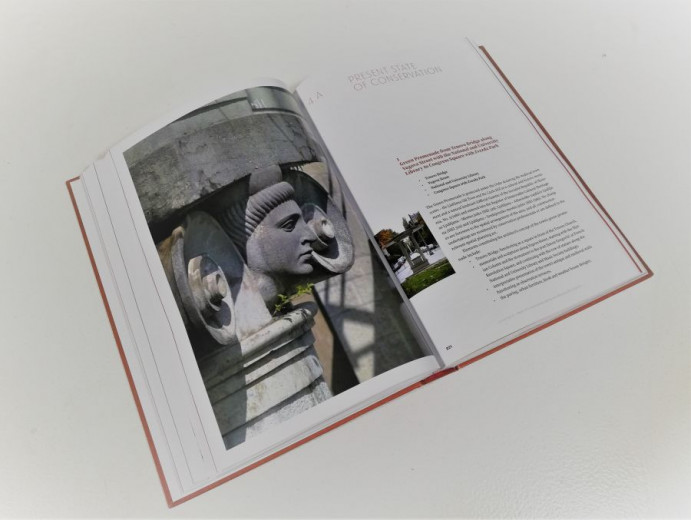Date: 14. March 2020
Time to read: 2 min
"Plečnik's Ljubljana" is a phenomenon of the 20th century urban landscape, transformed by one architect, with a conscious departure from the established modern movement orientations, to such an extent that the centuries-old character of the space was preserved.
As Kenneth Frampton wrote: "Due to his exceptional creativity and discreet innovativeness, Plečnik was able to create one of the most poetic works of the 20th century, which did not conform to any of the architectural trends of the time. "
With each and every of his addition to the city of Ljubljana, architect Jože Plečnik respected the existing space and enriched it with new motifs, buildings and functions. With respect to the existing city, he reinterpreted the city centre and developed it into a series of public spaces (squares, parks, streets, promenades, bridges) and buildings.
Plečnik honoured the characteristics of old Ljubljana – its natural, architectural and historical features, with their intangible aspects, and highlighted them with larger and smaller refinements.
His design is accompanied by a unique architectural expression, which draws on the rich heritage of architecture in the sense of innovative interpretation rather than in a derivative manner.
Water and land axes
Following these approaches and on the basis of the existing urban landscape, Plečnik designed two urban axes—a water and a land axis—that best exemplify his approach to spatial redevelopment. The green axis runs from Trnovo Bridge (Trnovski most) across French Revolution Square (Trg francoske revolucije), Vegova Street, Congress Square (Kongresni trg) and ends at Zvezda Park (park Zvezda). The water axis runs parallel to the land axis and is formed by the Ljubljanica River basin extending from Špica in the Trnovo suburb to the Ljubljanica Sluice Gate in the Poljane suburb. These two axes connect the transverse axes that form the urban network of the city. The historical city centre is connected with vital points in the urban and rural suburbs of the wider urban network of Ljubljana (the church of St Michael in the Ljubljana Marshes, the Church of St Francis of Assisi, Plečnik's Žale Cemetery – the Garden of All Saints).
In this way, Plečnik's creations in the city feature a series of independent micro-ambients and artistic interlaces that make up a mosaic of the whole. This allows users to diversify their use and enables different way of understanding the space.
Plečnik's approaches responded to the needs of a 20th-century modern society; moreover, they also respond to the problems of today's society, which strives to increase its sensitivity to spatial contexts and sustainable arrangements in urban planning.
The Working Group appointed for the preparation of the Nomination File for the inscription of Plečnik's architectural and urban development works on the UNESCO World Heritage List has prepared a file which contains 760 pages.
The Working Group, headed by the Ministry of Culture and coordinated by the Museum for Architecture and Design (MAO), included members from the Institute for the Protection of Cultural Heritage of Slovenia, the City of Ljubljana, the Museum and Galleries of Ljubljana and other external associates.
The Nomination File follows UNESCO's Operational Guidelines for the preparation of the nomination dossier and consists of nine main chapters covering different levels of heritage, such as the description of works, status of monuments, management systems, cartographic parts and more. The central part of the Nomination File is Chapter 3 addressing the topic of outstanding universal value. The chapter follows UNESCO criteria and substantiates the values of Plečnik's architecture.
Personal and collective identity of the city
When "Plečnik's Ljubljana" was being created, the architect's approaches were probably best put into words by art historian France Stelé, who captured the essence of Plečnik's work in a poetic tone: "Although Plečnik's Ljubljana is a personal creation which mirrors his strong personality and which left a strong mark on the city's manifestation, it is also our shared, collective Ljubljana, as Plečnik felt our love for the city and nurtured the ambitions that Ljubljana latently kept hidden for the present."



















